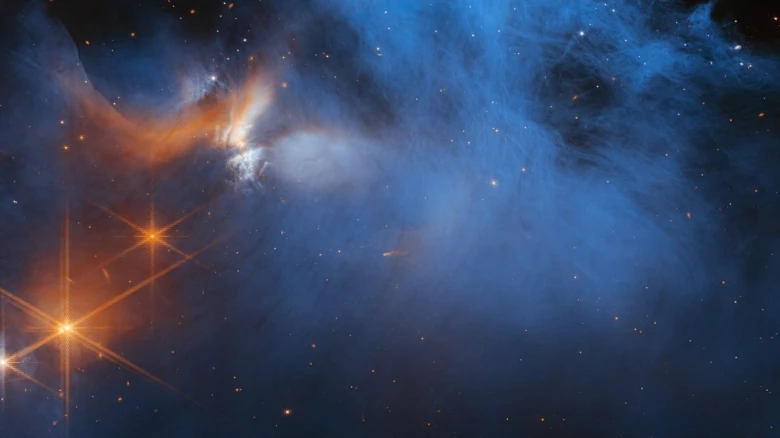Regional

Molecular clouds are interstellar collections of gas and dust that can form hydrogen and carbon monoxide...
Digital Desk: NASA's powerful James Webb Space Telescope recently looked inside a 630-light-year-away molecular cloud and discovered ice consisting of several elements. According to a press release, methane, sulphur, nitrogen, and ethanol were found in the Chameleon 1 cloud, which is thought to be one of the coldest and darkest zones ever discovered.
NASA shared a never-before-seen image of the icy cloud on Instagram. "This molecular cloud is so cold and dark that various molecules - not just water—have actually frozen onto the grains of dust inside the cloud. With its data, Webb demonstrates for the first time that molecules more complex than methanol (CH3OH) can form in the icy depths of molecular clouds before stars are born," the space agency wrote in the caption of the post.
Molecular clouds are interstellar collections of gas and dust that can form hydrogen and carbon monoxide. Dense clumps within these clouds can collapse to form young stars called protostars.
An international team of experts analyzed the freezing molecular cloud and found water ice, frozen ammonia, methanol, methane, and carbonyl sulphide inside. The researchers explained that as these elements are essential for life, the latest data will allow them to understand how much of each goes into the formation of new planets and how habitable the world will be.
"Our results provide insights into the initial, dark chemistry stage of the formation of ice on the interstellar dust grains that will grow into the centimeter-sized pebbles from which planets form in disks," said lead study author Melissa McClure, an astronomer and assistant professor at Leiden Observatory in the Netherlands, in a statement. The observation program's lead investigator is McClure.
"These findings provide a new insight into the production paths for the simple and complex molecules required to create the building blocks of life," McClure said in a press release.
Moreover, the researchers stated that the JWST had also discovered "prebiotic chemicals," as they are known, in the cloud. This simply refers to specific molecules known to promote the correct conditions for life's origins.
"Our identification of complex organic molecules, like methanol and potentially ethanol, also suggests that the many star and planet systems developing in this particular cloud will inherit molecules in a fairly advanced chemical state," Will Rocha, an astronomer at Leiden Observatory who contributed to the discovery, said in a statement. "This may indicate that the existence of primordial chemicals in planetary systems is a typical byproduct of star creation rather than a peculiarity of our own Solar System," he added.
To look for chemical fingerprints and identify the components, NASA astronomers used starlight that was filtered through the cloud.
Leave A Comment